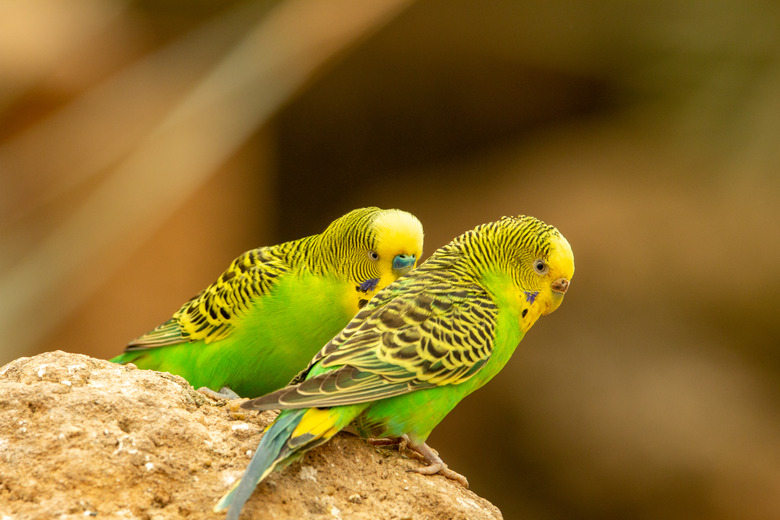The Natural Habitat Of Parakeets
Parakeets are types of parrots with long, tapering tails and a slender build. There are about 115 parakeet species found around the world. Wild parakeets live in warmer climates, including Sri Lanka, India, the Pacific Islands, Australia, and southeast Asia.
Specific types of parakeets, such as the lorikeet or ring-necked parakeet, are popular pet birds in their native India, Malaya, and Philippines. These types of green parrots are also common pets in other parts of the world, such as Britain, and have established feral colonies outside their native habitats.
However, when people talk about parakeets in North America, they are usually referring to the parakeet species budgerigar, also called shell parakeet or budgie. Wild budgerigars live in the grasslands of Australia, and that's why "Australia" is usually the answer to the question "Where are parakeets found in the wild?" Budgie-type parakeets are the most popular pet bird in North America.
Feral parakeet flocks
Feral parakeet flocks
Thanks to escaped pets, flocks of different parakeet species, such as budgies, ring-necked parakeets, and monk parakeets, can be found in North America, specifically southern Florida due to a parakeet-friendly climate. Technically, these flocks are not wild but feral. Although they are popular (especially in the Miami area), there are concerns that parakeets are invasive species impacting native bird populations.
Similarly, feral ring-necked parakeets, or green parrots, who are native to Africa and India are currently increasing in numbers in London, England. Likely, these species of parakeet are also descendants of released pets, but their survival is more surprising considering the London climate. A warming of London's average temperature, however, might be helping these feral types of green parrots thrive.
Parakeets in the wild
Parakeets in the wild
The budgerigar parakeet, or budgie, is a popular pet bird, which is why when it is used as a generic term, the term "parakeet" is associated with birds originally from Australia. Interestingly, the wild Australian budgie is slightly smaller than our parakeet pets, and they are usually green. The blue, white, and yellow colors we see in pet stores resulted after budgies were brought to Europe in 1838 to be bred as pets and zoo animals. Australia banned parakeet exportation in 1894, so many of the pet budgies in North America and Europe today are descendants of the original European breeding stock.
The budgerigar parakeet is found traveling in nomadic flocks across Australia's grassy scrublands today. Parakeets in the wild breed easily and nest in hollowed-out trees, laying six to eight eggs twice a year. Because they are ground seed eaters, wild budgie flocks can be a threat to farmers.
Food for parakeets
Food for parakeets
Commercial parakeet food, sometimes labeled budgie food, is readily available in bags of seeds or pellets. While a mix of seeds is an important part of a pet parakeet's diet, it must be supplemented with nuts, legumes, fruits, and vegetables. This way, the parakeet gets the correct balance of nutrition. A pet budgie eats about 1.5 to 2 teaspoons of seeds a day. Parakeets can also eat walnuts, almonds, pecans, and pistachios but never peanuts because they can contain a toxin resulting from peanut mold.
In the wild, parakeets also eat fruits, vegetables, and seeds but sometimes supplement their diet with insects, which makes wild parakeets omnivores. However, pet parakeet food should never include processed human food, dairy products, or anything that might contain pesticides. Budgies and other parakeets are social creatures and should live in pairs. With a good diet, they can live up to 10 years.
